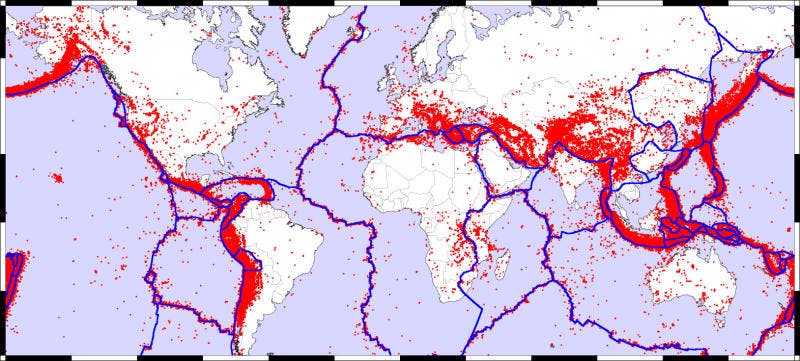Plate tectonics is one of the most important theories, from the point of view of its practical effects on society – just look at the earthquake in Japan, or the iminent one in California, for example. More than 40 years ago, a man named J. Tuzo Wilson published a paper in Nature, describing how ocean basins open and close, in what is taught today in every geology course as the Wilson cycle. Basically, some ocean basins will shrink and become seas, or even disappear, and some sea basins will become ocean basins.
His observations, known today as the “Wilson Tectonic Cycle” suggested that this process took place numerous times in Earth’s troubled history, most recently when the supercontinent Pangaea split into the continents we know today. Wilson’s ideas are extremely important for plate tectonics, as well as the processes which lie at the very core of earthquake formation and mountain genesis.
Since his paper was published in 1967, pretty much every study conducted on the topic supported this idea, but few managed to bring additional information. Now, new findings by Utah State University geophysicist Tony Lowry and colleague Marta Pérez-Gussinyé of Royal Holloway, University of London offered an interesting point of view on the whole subject.
“It all begins with quartz,” says Lowry, who published results of the team’s recent study in the March 17 issue of Nature.
The scientists used and described a new way of measuring the properties of the rocks located beneath the deep crust. This way reveals events that cause the Earth’s surface to crack, fold and stretch, and it displays the key role played by quartz.
“If you’ve ever traveled westward from the Midwest’s Great Plains toward the Rocky Mountains, you may have wondered why the flat plains suddenly rise into steep peaks at a particular spot,” Lowry says. “It turns out that the crust beneath the plains has almost no quartz in it, whereas the Rockies are very quartz-rich.”
He believes that it’s exactly those belts of quartz that set in motion the chain of events which leads to the mountain building rock cycle.
“Earthquakes, mountain-building and other expressions of continental tectonics depend on how rocks flow in response to stress,” says Lowry. “We know that tectonics is a response to the effects of gravity, but we know less about rock flow properties and how they change from one location to another.”
“Over the last few decades, we’ve learned that high temperatures, water and abundant quartz are all critical factors in making rocks flow more easily,” Lowry says. “Until now, we haven’t had the tools to measure these factors and answer long-standing questions.”
But now, thanks to EarthScope, that has all changed.
“This intriguing study provides new insights into the processes driving large-scale continental deformation and dynamics,” says Greg Anderson, NSF program director for EarthScope. “These are key to understanding the assembly and evolution of continents.”
“We’ve combined Earthscope data with other geophysical measurements of gravity and surface heat flow in an entirely new way, one that allows us to separate the effects of temperature, water and quartz in the crust,” Lowry says.
They found that even at a low seismic velocity ratio, even after separating the temperatures, quartz-rich crust appears in pretty much the same places as high lower-crustal temperatures modeled independently from surface heat flow.
“That was a surprise,” he says. “We think this indicates a feedback cycle, where quartz starts the ball rolling.”
However, if the temperature and water are the same, rock flow will tend to focus on the quartz because that is the weak link.
“Rock, when it warms up, is forced to release water that’s otherwise chemically bound in crystals,” he says
More info about the Earth Scope Project here










